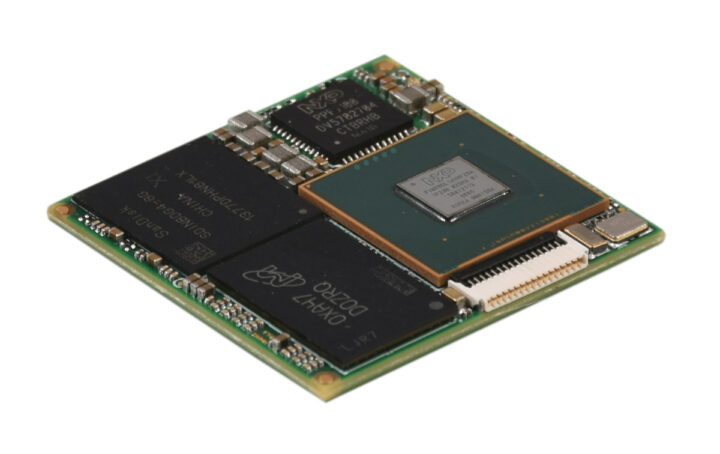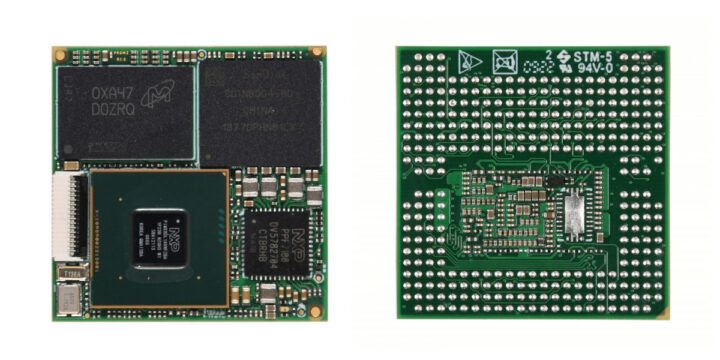iWave Systems has launched another system-on-module compliant with the SGET OSM (Open Standard Module) standard with the iW-RainboW-G46M powered by NXP i.MX 8XLite Cortex-A35 processor designed for V2X and IIoT applications and following OSM Size-S (30x30mm) form factor
The new system-on-module follows the iW-RainboW-G40M module with NXP i.MX 8M Plus processor and OSM Size-L (45x45mm) form factor launched at the beginning of the year. The iW-RainboW-G46M comes with 2GB RAM and 8GB flash by default, Gigabit Ethernet, PCIe, and CAN interfaces among others, and can operate in a wide -40°C to +125°C temperature range.
iW-RainboW-G46M specifications:
- SoC – NXP i.MX 8XLite Dual/Solo Cortex-A35 processor @ up to 1.2 GHz with Cortex-M4F real-time core, on-chip V2X accelerator (but no GPU, no VPU)
- System Memory – 2GB LPDDR4 (expandable)
- Storage – 8GB eMMC Flash (expandable)
- 332 balls contact grid with
- Display – 18-bit RGB LCD interface
- Audio – 1x I2S
- Networking – 2x Gigabit Ethernet (RGMII), including one with AVB
- USB – 1x USB 2.0 OTG, 1x USB 2.0 host
- 2x CAN ports
- 1x PCIe Gen3
- 15x GPIOs
- Up to 3x UART, 1x SPI, 2x I2C
- 1x JTAG
- Power Supply – 5V, 2.5A
- Dimensions – 30 x 30mm (OSM 1.0 standard Size-S)
- Temperature range – -40°C to +125°C
- AEC-Q104 Grade
 The company provides Linux 5.4.7 (or higher) and Android 11 (or higher) BSPs for the module, with Ubuntu OS also mentioned. iWave Systems expects it to be used in Vehicle-to-Vehicle communication (V2V), Vehicle to Infrastructure (V2I) and Vehicle to Network (V2N) applications, as well as Industrial IoT, control, and connectivity applications. A development kit for the system-on-module is also available, but no details were given about it. The earlier iW-RainboW-G40M devkit is a Pico-ITX carrier board, so it might be the same for the new i.MX 8XLite module.
The company provides Linux 5.4.7 (or higher) and Android 11 (or higher) BSPs for the module, with Ubuntu OS also mentioned. iWave Systems expects it to be used in Vehicle-to-Vehicle communication (V2V), Vehicle to Infrastructure (V2I) and Vehicle to Network (V2N) applications, as well as Industrial IoT, control, and connectivity applications. A development kit for the system-on-module is also available, but no details were given about it. The earlier iW-RainboW-G40M devkit is a Pico-ITX carrier board, so it might be the same for the new i.MX 8XLite module.
Pricing has not been made public, but we do know the board is part of a 10-year product longevity program, so it will be available at least until 2032. Additional information may be found on the product page.

Jean-Luc started CNX Software in 2010 as a part-time endeavor, before quitting his job as a software engineering manager, and starting to write daily news, and reviews full time later in 2011.
Support CNX Software! Donate via cryptocurrencies, become a Patron on Patreon, or purchase goods on Amazon or Aliexpress





